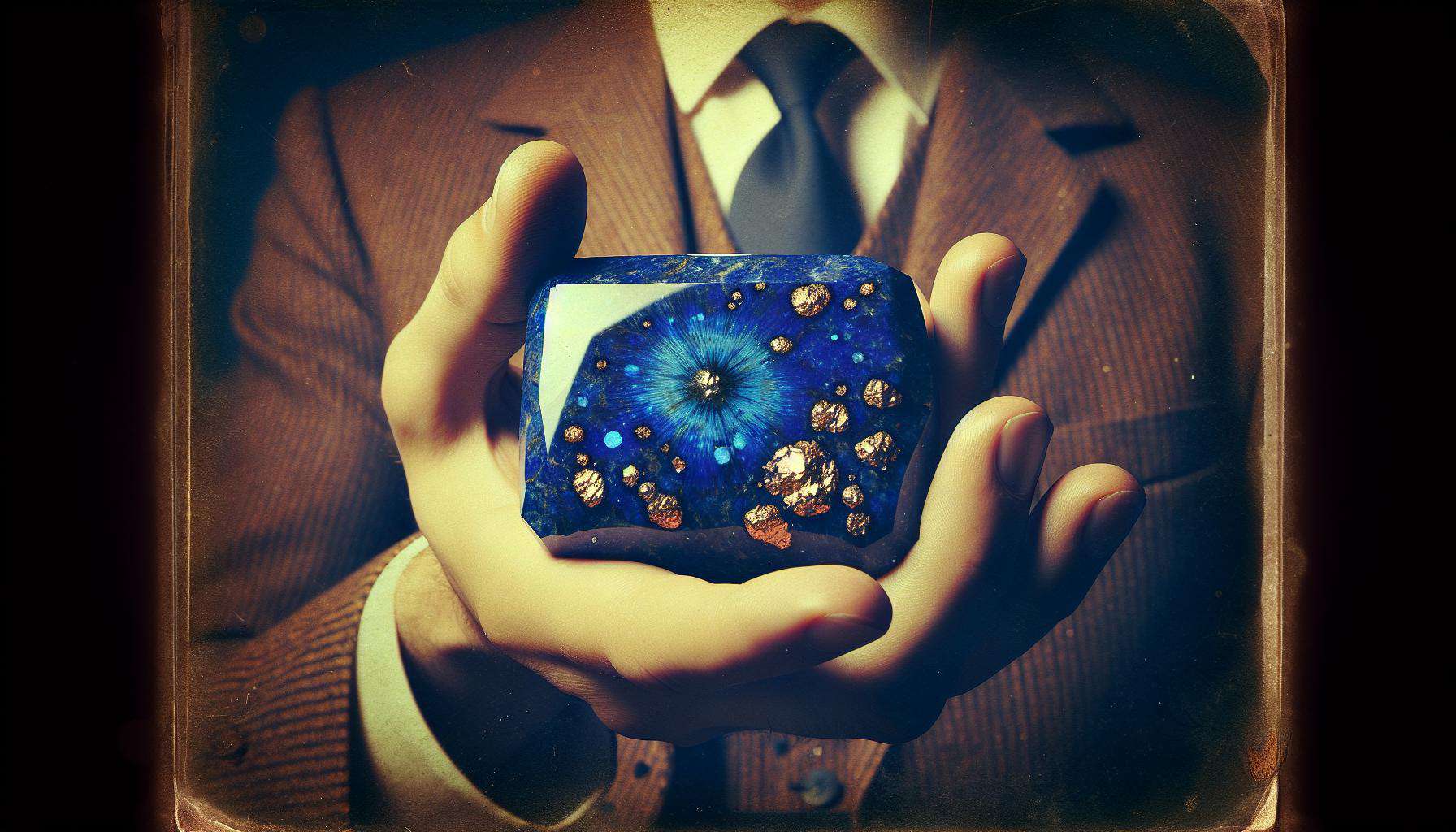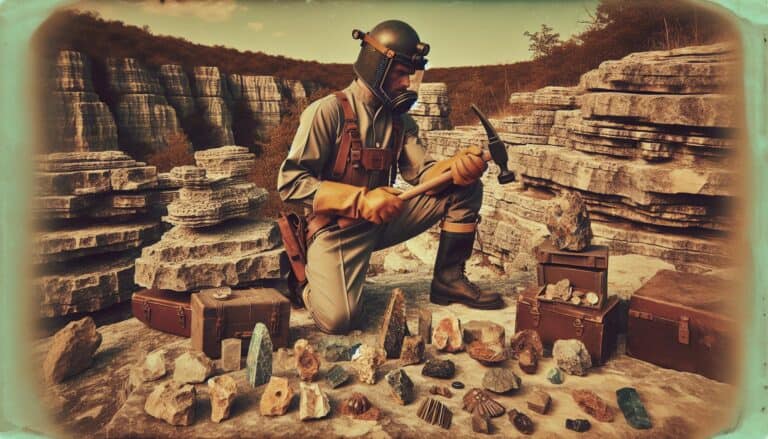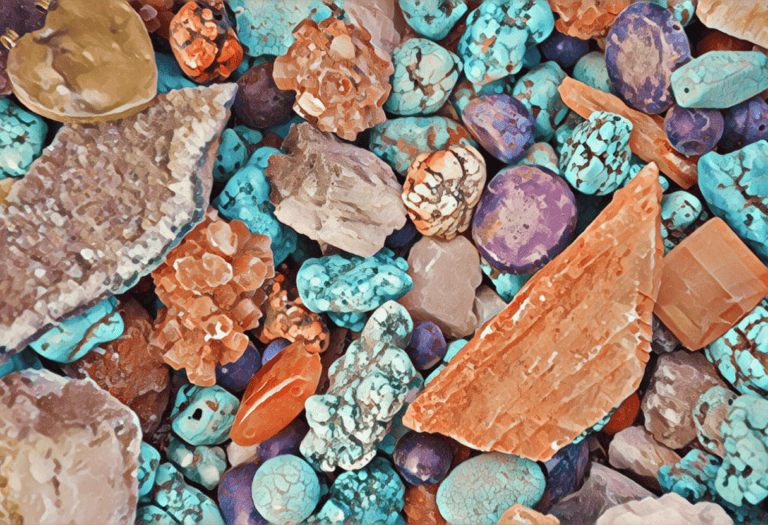Ever wondered about the value of that deep blue gemstone that’s caught your eye?
Lapis lazuli, with its mesmerizing hues, is not just another pretty rock; it’s a treasure with a price tag that might surprise you. Whether you’re a collector, a jewelry enthusiast, or just curious, understanding lapis lazuli’s worth is key.
The value of lapis lazuli varies widely based on several factors, from its color intensity and pattern to its origin and treatment. If you’re looking to invest or indulge in this ancient stone, you’ll want to know what sets the high-quality pieces apart.
Let’s dive into the world of lapis lazuli and uncover what determines its worth.
Lapis lazuli value depends on color, clarity, origin, and treatment. The best quality has deep, vibrant blue hues with minimal calcite and pyrite inclusions. Afghan lapis lazuli is highly valued. Prices vary based on these factors, with natural, untreated stones commanding higher prices.
What Is Lapis Lazuli?
Lapis lazuli, a gemstone that captures the night sky in rock form, is as alluring as it is valuable. Its name originates from the Latin ‘lapis,’ meaning stone, and the Persian ‘lazhuward,’ meaning blue. This ancient stone boasts a rich ultramarine color peppered with golden flecks of pyrite, resembling stars scattered across the cosmos.
This semi-precious stone has been coveted for millennia, with uses that span the decorative and the divine. Ancients crafted amulets, ornaments, and even ground it into powder for dyes and cosmetics. Today, lapis lazuli’s appeal endures, finding its way into modern jewelry, carvings, and mosaics.
Lapis lazuli’s worth lies in its deep, celestial blue hue, a color so prized that it often overshadows its historical significance. Benefit from knowing that the finest quality lapis lazuli comes from the rugged mountains of northeast Afghanistan, a source of this gem since ancient times. Lesser quality specimens might hail from Chile or Russia, but they lack the intense azure of their Afghan counterparts.
The stone’s value is influenced by its color saturation, the presence of calcite or pyrite inclusions and the fineness of the grain. Opt for stones with a uniform, deep blue color and minimal white calcite streaks for greater value. The presence of pyrite can either detract from or enhance the stone’s value, depending on its look: a sprinkling of small, gold-like flecks is considered appealing while an overabundance may reduce the gemstone’s worth.
When purchasing lapis lazuli, it’s crucial to inquire about treatments. A natural, untreated stone is more precious than one that has been dyed or heat-treated. Occasionally, you may encounter “reconstituted” lapis lazuli which is made from lower grade materials combined with a binding agent to mimic the appearance of high-quality lapis. Be wary, as these composites do not match the innate beauty or value of genuine lapis lazuli.
Lapis Lazuli Prices: Factors That Affect Value
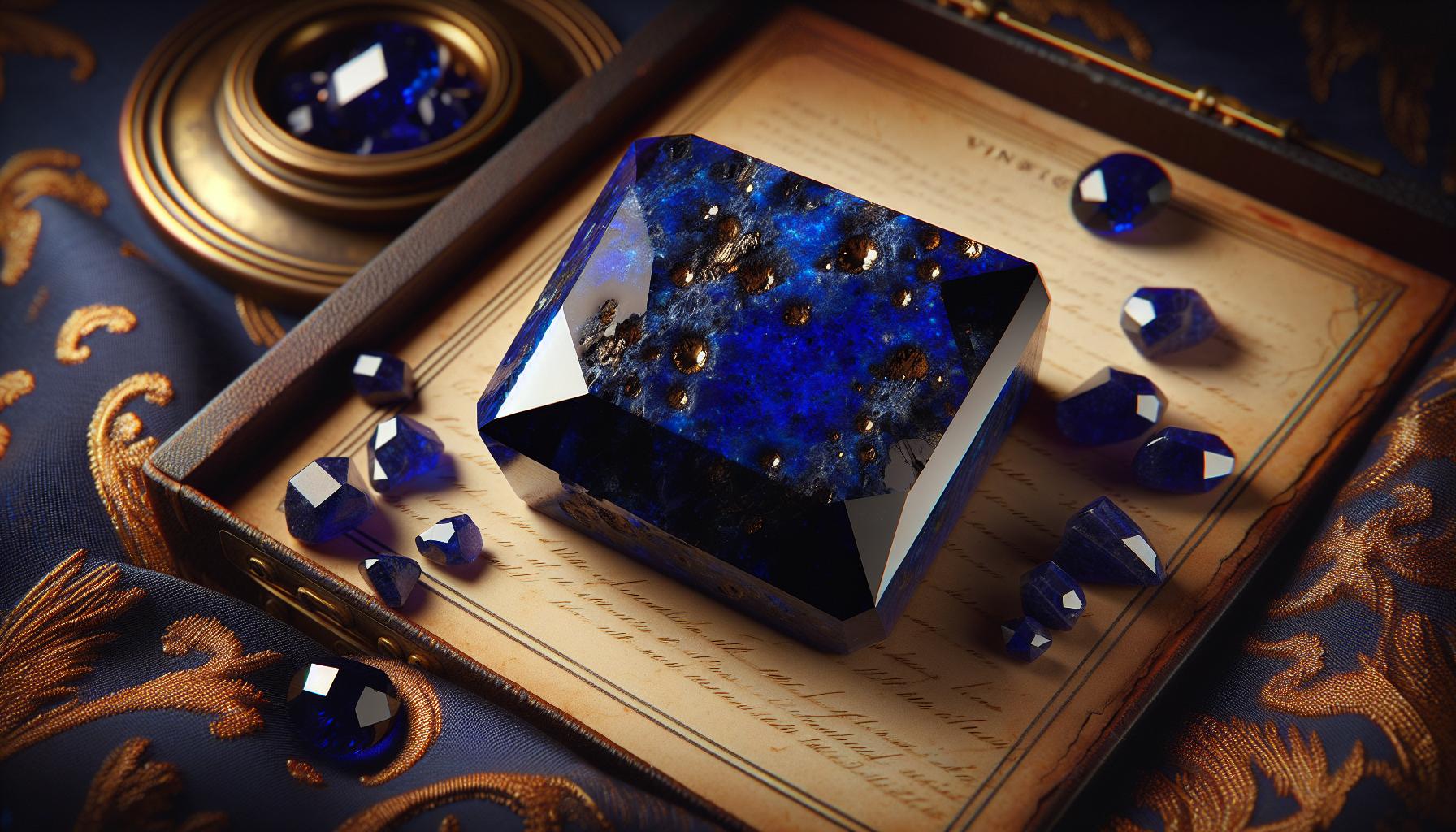
When you’re keen on adding a lapis lazuli to your collection or simply wish to understand its worth, it’s crucial to know the factors that significantly impact its value. The value of lapis lazuli isn’t set in stone; it varies depending on several key points.
Color, Clarity, and Cut Quality
The allure of lapis lazuli is primarily driven by its captivating color. A deep, intense blue with a hint of violet is the benchmark for the highest quality stones. A lesser saturation or the presence of green or gray tinges can substantially diminish the stone’s worth.
Clarity also plays a role. While lapis lazuli isn’t transparent and does not have clarity in the traditional sense used for diamonds, the type and amount of inclusions can affect its desirability. Stones with fewer calcite streaks and more uniformly distributed pyrite flecks fetch higher prices.
The cut of the lapis lazuli is equally important, emphasizing the stone’s natural beauty without showcasing any imperfections. A skillful cut that enhances the play of color and sparkle without removing too much material commands a premium. Popular cuts include cabochon and beads for jewelry, while larger slabs may be used in decorative objects.
Market Demand and Availability
The market’s supply and demand greatly influence lapis lazuli’s price. With the finest quality lapis hailed from the mines of Afghanistan, geopolitical issues can impact their accessibility and, in turn, the market value. Conversely, more accessible variants from Chile or Russia may be more affordable but are typically of lower quality.
Market trends also dictate the gemstone’s popularity. At times when lapis lazili is fashionable or in high demand by collectors and connoisseurs, prices can see a notable increase. The uniqueness of each piece further affects the pricing, as no two stones are exactly alike with variations in coloring and inclusions.
Understanding these factors will help you navigate the market and assess lapis lazuli pieces with a discerning eye. Remember, a stone’s provenance can add to its story and desirability. Always verify the gemstone’s authenticity and inquire about any known treatments, as natural, untreated lapis lazuli is a treasure to behold. Keep these insights in mind, and you’ll be well-equipped to gauge the value of a lapis lazili piece with confidence.
Understanding Lapis Lazuli: A Rare Gem
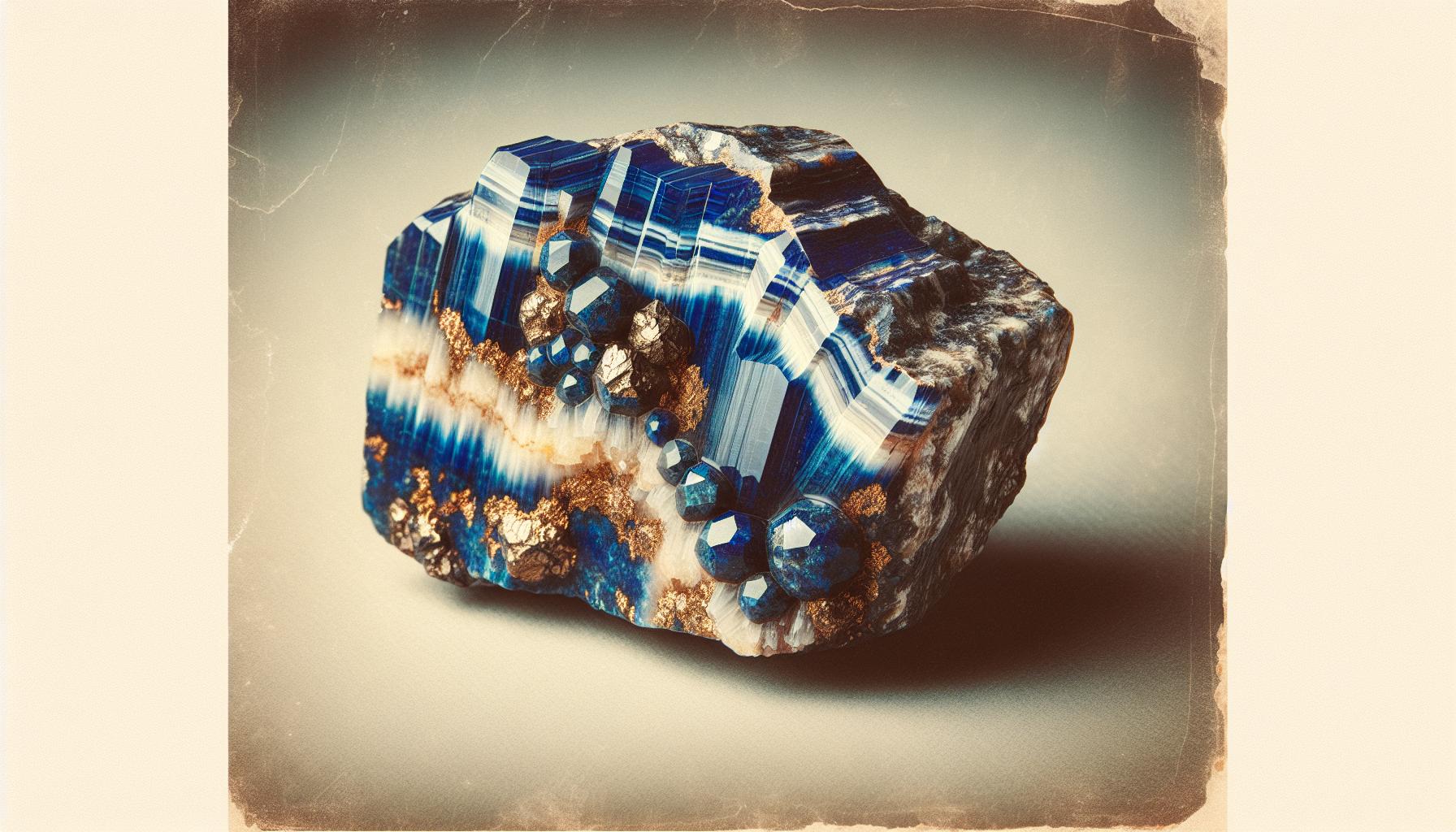
The Rarity of Lapis Lazuli
When you embark on the quest for lapis lazuli, you’re not just purchasing a gemstone; you’re investing in a piece of history. Lapis lazuli’s rarity stems from its very limited source locations. The finest specimens are predominantly found in the Kokcha River valley of Afghanistan, a region that has been mined for over 6,000 years. Accessibility to these mines is often hindered by political and social unrest, making the journey for high-quality lapis even more challenging. Despite other deposits existing in countries like Chile and Russia, none have matched the deep, celestial blue of Afghan lapis lazuli, which is accented by golden flecks of pyrite—a combination that’s impossible to overlook.
Origins and Characteristics
Lapis lazuli isn’t a mineral but a rock composed of various minerals, mainly lazurite, calcite, and pyrite. The interplay between these minerals results in lapis lazuli’s characteristic deep blue with golden flecks and white streaks. Most intriguingly, it’s one of the few gemstones that’s been treasured since antiquity, used by ancient civilizations across the globe, from the Egyptians to the Mesopotamians.
- Color Consistency: The presence of lazurite dictates the prized sapphire-like hue. A higher concentration of lazurite results in a deeper, more valued blue.
- Texture and Durability: Lapis’s unique texture and moderate hardness of 5 to 5.5 on the Mohs scale make it sufficient for jewelry, but careful handling is essential to prevent scratching.
The dynamic origins of lapis lazuli speak to its individuality – no two stones are exactly alike, making each piece a singular work of natural art. It’s your link to the past, a testament to the earth’s geological marvels, and a truly unique addition to any collection.
Lapis Lazuli Grading and Valuation
When you’re looking to determine how much lapis lazuli is worth, understanding its grading system is crucial. This system takes into account several of the factors previously mentioned, such as color, clarity, and cut quality, but also assigns a grade to the gemstone that directly reflects its market value.
The Grading System for Lapis Lazuli
The grading of lapis lazuli isn’t standardized like diamonds; instead, it is somewhat subjective. However, gemologists commonly assess lapis lazuli based on the following criteria:
- Color: The most prized lapis lazuli stones boast an even, deep blue color without white calcite spots or streaks. A touch of violet is acceptable, but green or gray tinges lower the grade.
- Clarity: Despite being an opaque stone, the clarity of lapis lazuli refers to its texture and the distribution of its inclusions such as pyrite and calcite.
- Cut: While lapis lazuli is often cut into cabochons or beads, a skilled cut that showcases the stone’s color and minimizes the appearance of inclusions can increase its value.
- Quantity of lazurite: The higher the content of lazurite, the deeper the blue and the higher the quality.
- Craftsmanship: Artisanal mining practices and craftsmanship also play into the grading of lapis lazuli.
Typically, gemstone dealers categorize lapis lazuli into a top-tier, mid-grade, and commercial grade. Top-tier lapis is the most valuable and exhibits all the desirable attributes at their best.
Certification and Appraisal
Seeking a professional certification and appraisal for your lapis lazuli can greatly assist you in understanding its value. A reputable gemologist can issue a certificate that authenticates the gemstone and provides a detailed analysis of its characteristics and quality grade. Here’s how a certification can impact the valuation:
- Establishes authenticity: It confirms that the lapis lazuli is genuine and not a synthetic or imitation stone.
- Details treatments: The certificate should state whether the stone has undergone treatments which can affect its value.
- Insurance and resale: Certification provides a document that’s essential for insurance purposes or future resale.
While professional appraisals do involve a fee, they’re often worth the investment, especially for high-grade lapis lazuli. The appraisal will give you a market-related valuation, helpful if you’re considering selling the piece or for personal knowledge of your collection’s worth.
Keep in mind that market demand also has a significant role in the gemstone’s valuation. Lapis lazili’s history, lore, and use in fine jewelry and decorative objects feed into its desirability and thus its monetary worth. The intricacies of its grading, combined with an expert certification and appraisal, can assure you of its true value in today’s market.
Current Market Trends in Lapis Lazuli Pricing
In today’s market, lapis lazuli prices are anything but static. You’ll find that quality, geopolitical stability, and fashion trends play significant roles in determining how this ancient gem is valued. With the rise of social media and the Internet, eclectic trends are pushing more consumers towards unique, natural stones, moving away from traditional diamonds and sapphires.
To understand recent shifts, consider the global fascination with holistic and wellness lifestyles. Lapis lazuli, rooted in historical significance and often associated with healing properties, is increasingly sought after. This drives demand higher, especially for top-tier stones showing that coveted deep blue hue.
Below are some important considerations affecting the lapis lazuli market:
- Supply Constraints: Due to the limited number of mines and the challenges in extractive regions like Afghanistan, top-quality lapis lazuli supply is often uncertain.
- Increased Demand: There’s a booming interest in natural stones among jewelry designers and collectors.
- Cultural Resurgence: The use of lapis lazuli in statement pieces and its historical significance has found new appreciation in the fashion industry.
Market trends can best be read through price fluctuations. While actual figures may vary, top-grade lapis lazuli can fetch significant sums. For example, the Afghan government reported that lapis exporting revenues increased drastically within recent years, highlighting a surge in global demand. Let’s look at some average price points:
| Lapis Lazuli Grade | Avg. Price per Carat (USD) |
|---|---|
| Low-Quality | 1-5 |
| Medium-Quality | 30-50 |
| High-Quality | 100-150 |
Note: Prices are indicative and may vary based on the ever-changing market scenario and specific characteristics of each piece.
Retailers may mark up prices based on the lapis lazuli’s setting, historical significance, or associated craftsmanship. Particularly rare pieces that encompass both historical and cultural value have seen auction prices soar. Prestigious jewelers and luxury brands also add a premium for their unique lapis lazuli designs, reflecting the status and exclusivity that accompany such pieces.
The Most Expensive Lapis Lazuli
When you’re delving into the world of precious stones, lapis lazuli stands out for its striking blue color. But what factors into the cost of the most expensive specimens? Top-grade lapis lazuli often shows an intense, deep blue color, sprinkled with minuscule flecks of golden pyrite. If these characteristics shine through perfectly, the value soars.
Exceptional pieces may find their origins in the famed Sar-e-Sang mines of Afghanistan, renowned for yielding high-quality lapis lazuli for centuries. Such historic provenances add to the allure and price tag. Size matters too; larger pieces with outstanding attributes can command eye-watering sums. Collectors and connoisseurs covet this caliber of lapis lazuli, not just for jewelry but for high-end decor and art.
Diving into the specifics, let’s explore some cases that made headlines:
- In 2015, a rare lapis lazuli bowl from the 12th century sold at Christie’s Auction for an impressive $2.5 million
- Lapis lazuli carvings, particularly from the Chinese Qing Dynasty, often fetch six-figure prices
High-quality lapis lazili’s scarcity prompts designers to craft unique, limited-edition pieces, harnessing its appeal to elevate their creations – and prices. It’s not unusual for jewelry that integrates premium lapis lazuli with other precious materials like gold or diamonds to see price tags exceeding tens of thousands of dollars.
When you’re considering purchasing lapis lazuli, remember that you’re investing in rich history and timeless elegance. The most expensive lapis lazuli offers unmatched beauty, sought after by collectors worldwide. Retailers know this and price these blue treasures accordingly. As you browse, it’s vital to keep in mind the factors that dictate pricing: color saturation, the presence of pyrite, and the stone’s provenance and size. Being informed can help you discern whether the investment aligns with the stone’s actual worth.
Buying Lapis Lazuli: Tips and Recommendations
When you’re looking to add lapis lazuli to your collection, understanding where to purchase and how to ensure you’re getting the best value is vital. Let’s delve into the world of lapis lazuli, exploring trusted sources and authentication methods that safeguard your investment.
Where to Purchase High-Quality Lapis Lazuli
Specialty Gemstone Stores: These stores are your go-to for high-quality lapis lazuli. The staff usually have extensive knowledge and can guide you through their curated selection.
- Online Marketplaces: Platforms like Etsy or eBay can offer a wide array of lapis lazuli pieces. Ensure the seller has high ratings and good reviews.
- Trade Shows and Exhibitions: Gem and jewelry shows allow you to see a multitude of options and talk directly to the dealers.
- Direct from Source: Buying from countries known for lapis lazuli mining, like Afghanistan, can provide access to top-tier stones.
Keep in mind the reputation of the seller and ask for documentation certifying the gemstone’s quality.
- Certificates of Authenticity: Always ask for a certificate from a reputable gemological laboratory.
- Understanding Treatments: Be aware that lapis lazili can be dyed or treated to enhance color; untreated stones typically hold more value.
- Expert Appraisal: Before purchasing an expensive piece, consider having it appraised by an independent gemologist.
When assessing lapis lazuli, pay close attention to:
- Color: The most sought-after color is a deep, vibrant blue with minimal white calcite streaks.
- Inclusions: Pyrite inclusions add to the stone’s beauty but don’t necessarily increase its value unless the patterns are particularly appealing.
Arming yourself with knowledge about the intricacies of lapis lazuli can make your buying experience both enjoyable and worthwhile. Remember, a keen eye for detail and a bit of background research can go a long way in picking out a gem that’s not only beautiful but also a valuable addition to your collection.
Conclusion: Buying & Selling Lapis Lazuli
Determining the worth of lapis lazuli is a nuanced process. You now know that color, clarity, cut quality, and uniqueness are pivotal in valuing this captivating stone.
Remember, the market fluctuates, so staying informed about current trends is key. When you’re ready to buy, prioritize authenticity and seek out reputable sellers. Don’t forget the importance of certificates and expert opinions, especially when it comes to treatments and appraisals.
Armed with this knowledge, you’re set to make a wise investment in lapis lazuli that holds not just monetary but timeless value.

